No Ramada Inn for George Washington: Photo exhibit shows where general and his men slept
- Oops!Something went wrong.Please try again later.
"George Washington Slept Here." That's the cliché. The No. 1 boast for any historic house, however awful — as the characters in the 1940 Kaufman & Hart play of that name discover.
But what about the places where George Washington didn't sleep? The places where his aides, his servants, his troops, his slaves slept?
They, in some cases, don't bear thinking about. But they do bear looking at, says Xiomáro, a Ramsey artist, musician and photographer who has culled some 21 large-scale images of historic sites in Morristown for an exhibit he calls "At Home With George: Washington's Morristown Winter, 1779-1780." The show is at the Morris Museum through July 30.
"You have all these supporting actors and supporting players, and we don't ever think about where they slept," he said.
Study in contrasts
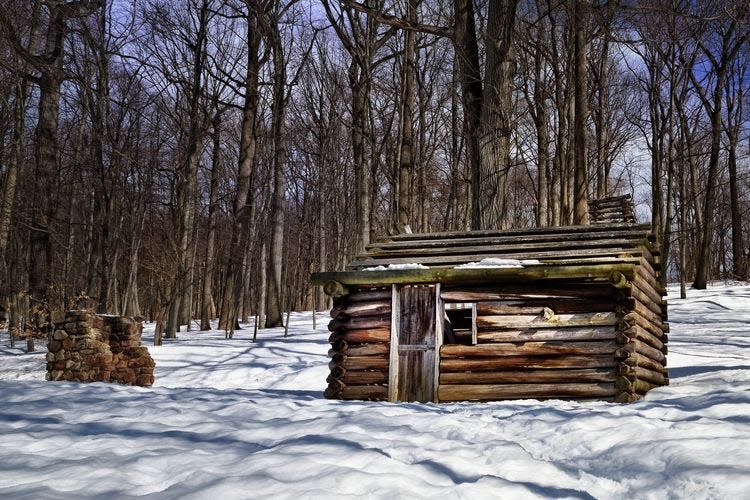
Some images are of the Ford Mansion, where Washington was quartered briefly in 1777 and then for more lengthy stay during the especially brutal winter of 1779-1780.
Comparatively speaking, it was the lap of luxury. But not so much for anyone not named George Washington.
"There were only so many rooms in the mansion, and Washington obviously got the better digs," Xiomáro said. "The widow who owned the house ended up sleeping in the dining room with her daughter. Her boys slept in the library, and then Washington's aides and visiting dignitaries wound up sleeping in other rooms on cots. Which meant that the servants and the slaves ended up in the hallway."
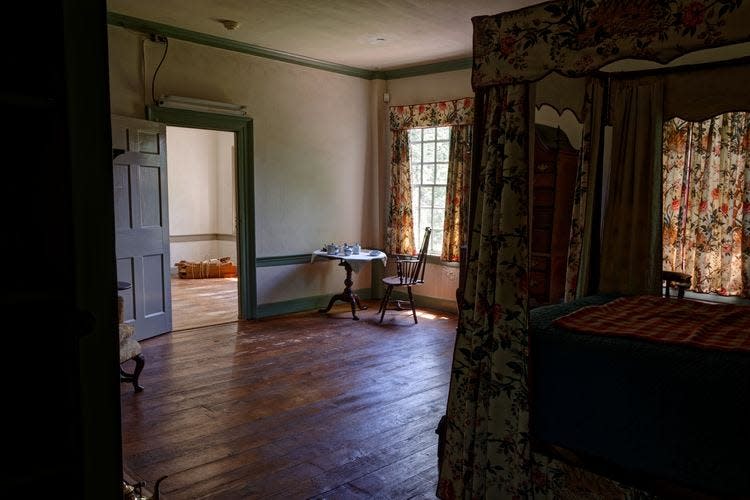
And they, in turn, had it easy compared to the common soldiers.
The "Hard Winter" of 1779-1780 was even worse than Valley Forge two years before, historians tell us. Some 10,000 soldiers hewed trees and built crude log cabins out in the grounds of Jockey Hollow Farm in Morristown. Only about 8,000 of the men survived.
Today, there are reproductions of those cabins, on the grounds of Morristown National Historic Park. Photos of them are side-by-side with photos of the Ford Mansion, in Xiomáro's exhibition.
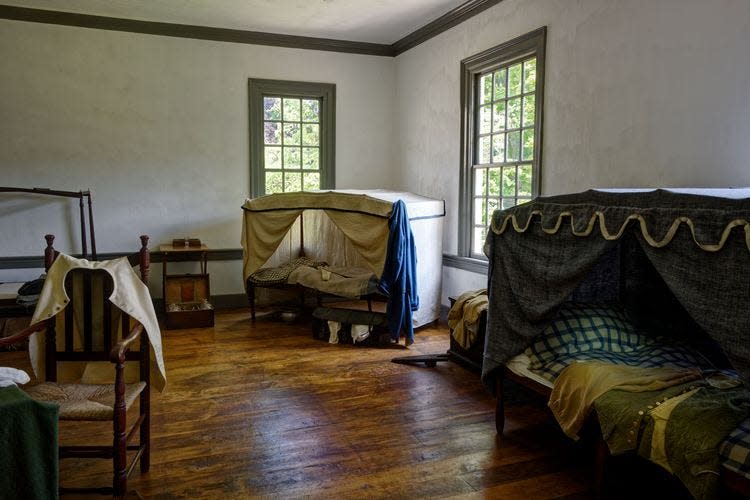
The comparison between the General's lodgings and the the hovels of the ordinary soldiers is pretty revealing, Xiomáro said.
"They're horrible," he said. "First of all they're very small, about 14 feet by 16 feet. And within that space you could have as many as 12 soldiers living there. And then it gets worse. They're not insulated in any way. When you go in, you can actually see the gaps in the logs. And they're living there in wartime conditions, fighting this superpower known as the British Empire. And it's during the wintertime. And it also happens to be the worst winter of the entire century."
A-list access
Why visit photos of the sites, when you could visit the sites themselves? Several reasons, Xiomáro said.
For one thing, some people might be more inclined to visit a museum than an historic site.
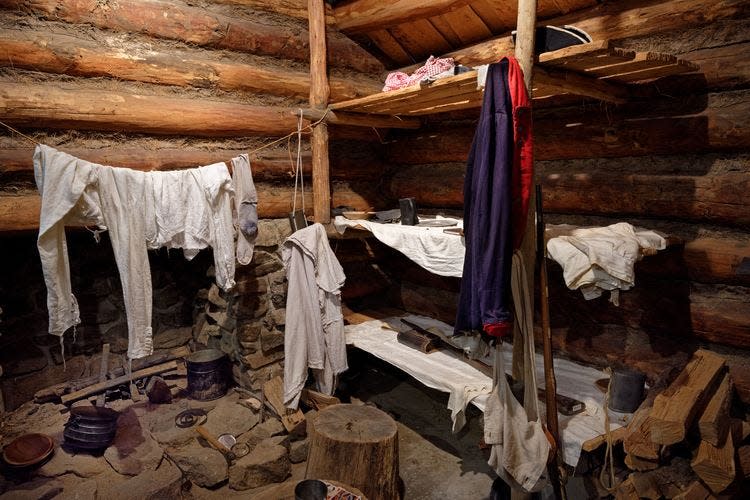
For another, tourists to these sites can be overwhelmed, hurried along by guides. "You might not know where to go or what to see," he said. "And when you're on a tour, and you're with a group of people, your time is limited."
An artist, on the other hand, can offer viewers a curated — if virtual — visit. One in which carefully selected images tell a story. Moreover, as photographer, he had access to places that the ordinary visitor doesn't. "I'm giving full access," he said. "I can go in and take angles and perspectives you couldn't get in a tour."
The photos of Xiomáro — pronounced “SEE-oh-MAH-ro" — have been exhibited nationally, from Harvard University in Massachusetts to Brigham Young University in Utah to the congressional offices of Washington D.C. Originally from Brooklyn, the son of Caribbean parents, he has brought a non-WASP perspective to his favorite subject, American history — not unlike Lin-Manuel Miranda, whom he somewhat resembles in photos.
"My father came from Cuba to New York just before Castro took over," he said. "When you grow up with that family background, you have a different appreciation for what we have here. I think folks who have families that go back a couple of generations in America take it for granted."
With his photographs, and with shows like "At Home With George," he's helping Americans to see their country with fresh eyes.
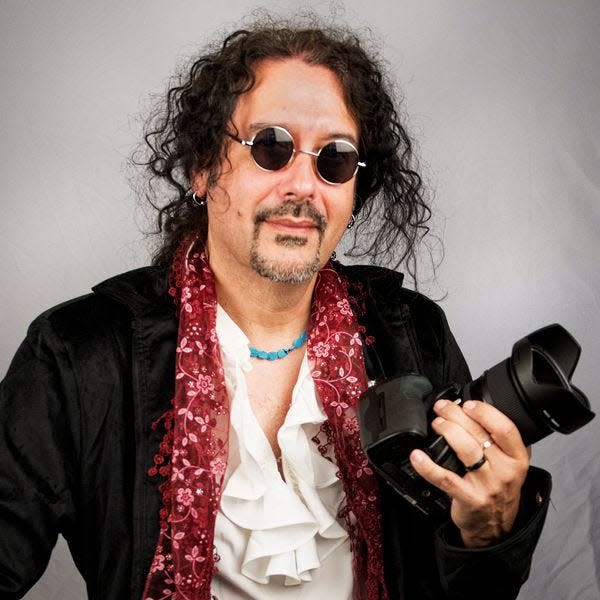
He's also making a name for himself as an artist. Only the name isn't quite his. Xiomáro is a pseudonym.
If, however, you find Xiomáro to difficult, you can call him "Xio." Or just "X." Lots of people do.
"It keeps getting shorter and shorter," he said.
Go...
"At Home With George: Washington's Morristown Winter, 1779-1780." Morris Museum, 6 Normandy Heights Rd, Morristown. 11 am. to 5 p.m. Wed. through Sunday. 973 971-3700. Morrismuseum.org
This article originally appeared on NorthJersey.com: George Washington slept in New Jersey, photo exhibit shows

